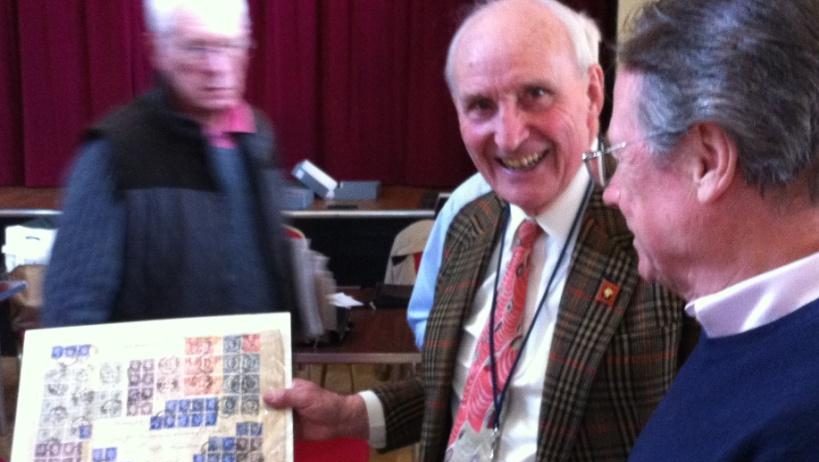Long time member and eminent philatelist Gavin Fryer has often given presentations at Bookham and they are always memorable and original. Last time his topic was “Holes” in a presentation that was both serious and amusing. At the March meeting Gavin told the story of the three successive Empire Air Mail schemes that began in the late 1930s to provide for subsidised air mail first to East and South Africa, then to India and the Far East and finally to Australia, New Zealand and the Pacific. The scheme came to an end at the outbreak of WW2 in 1939. Before this, air mail letters cost only 1½d and post cards 1d, in what was a subsidised service linking up more than half the Empire. After the scheme ended, prices for all mail were steeply increased.
The first part of Gavin’s display featured the short period the scheme was in operation with examples of mail connecting the UK to many parts of the Empire to the East and South. The display also included contemporary ephemera such as the GPO publicity posters, and copies of the various Government White Papers and Gazette notices. The second half was of the period at the beginning of the War when airmail often cost many pounds to send. One item on show carried more than £6 worth of stamps. At this time stamps up to the value of 10 shillings were available and many heavier items had to carry multiples of shilling, half crown, five and ten shilling stamps. £6 spent in 1939 in today’s money? £352! Even with the very high prices charged by Royal Mail today, this is very much more. Today a 2kg parcel to New Zealand would set you back only £30.
Gavin’s presentation reminded us of just how important airmail quickly became as soon as it began in the inter-war period. Whereas it could take months for mail to go to distant places, airmail made the world seem a lot smaller. In today’s world of instant and very low cost communications it is easy to forget just how revolutionary airmail was. Making international phone calls was difficult, tedious and very expensive. Telegrams were OK for very short messages but also expensive. Low cost airmail made huge changes to people’s lives and the entire world economy.
